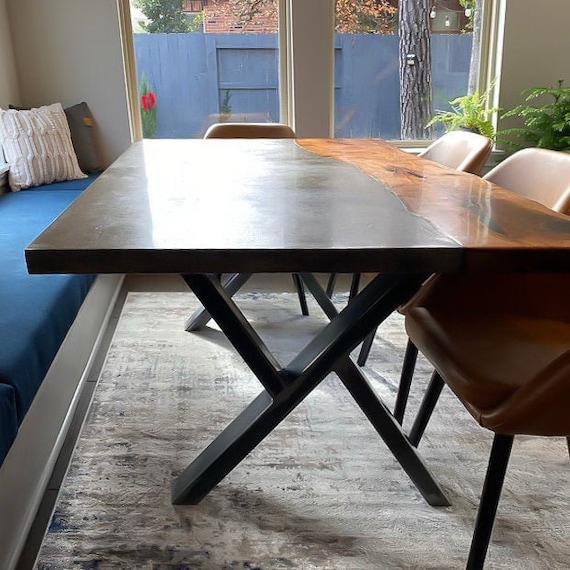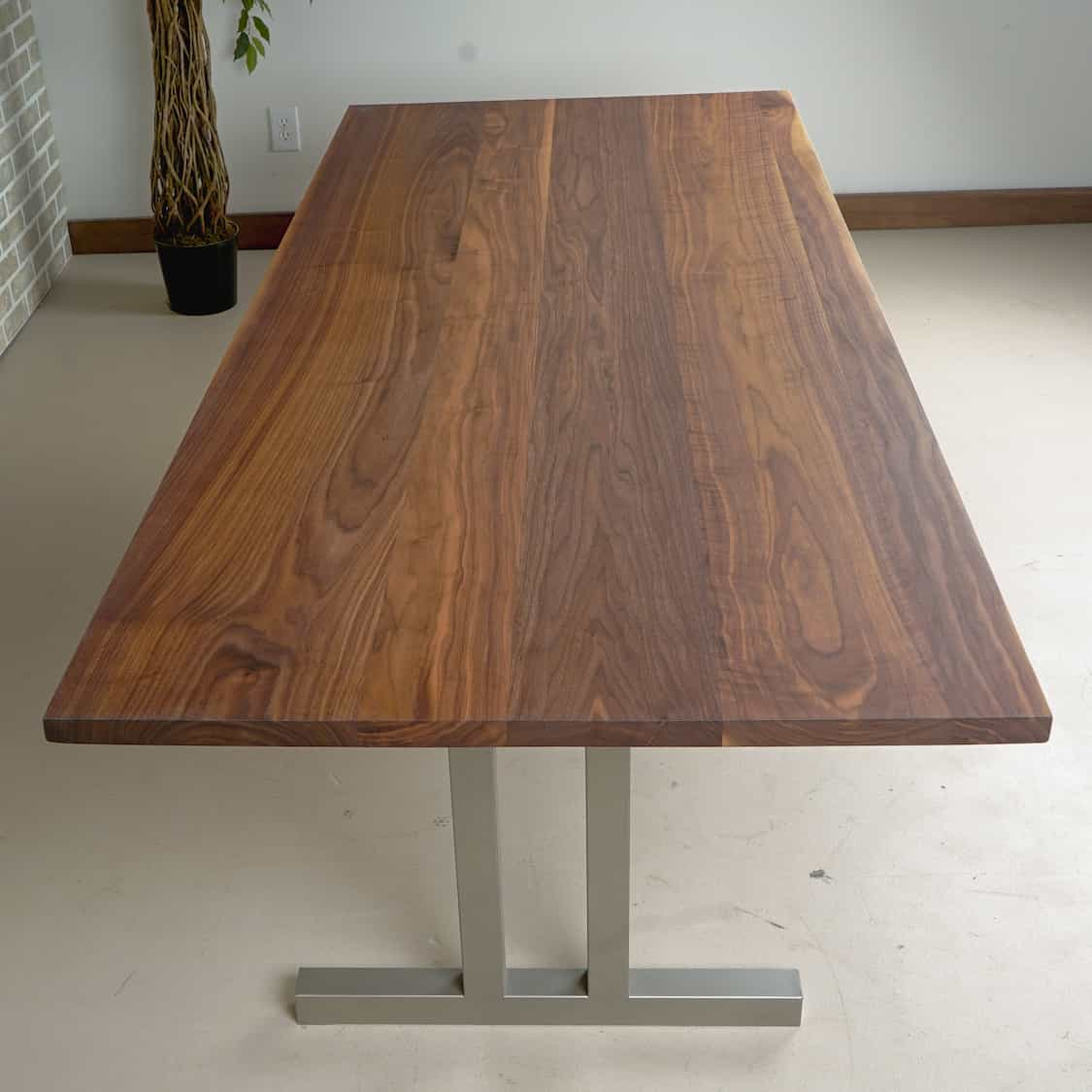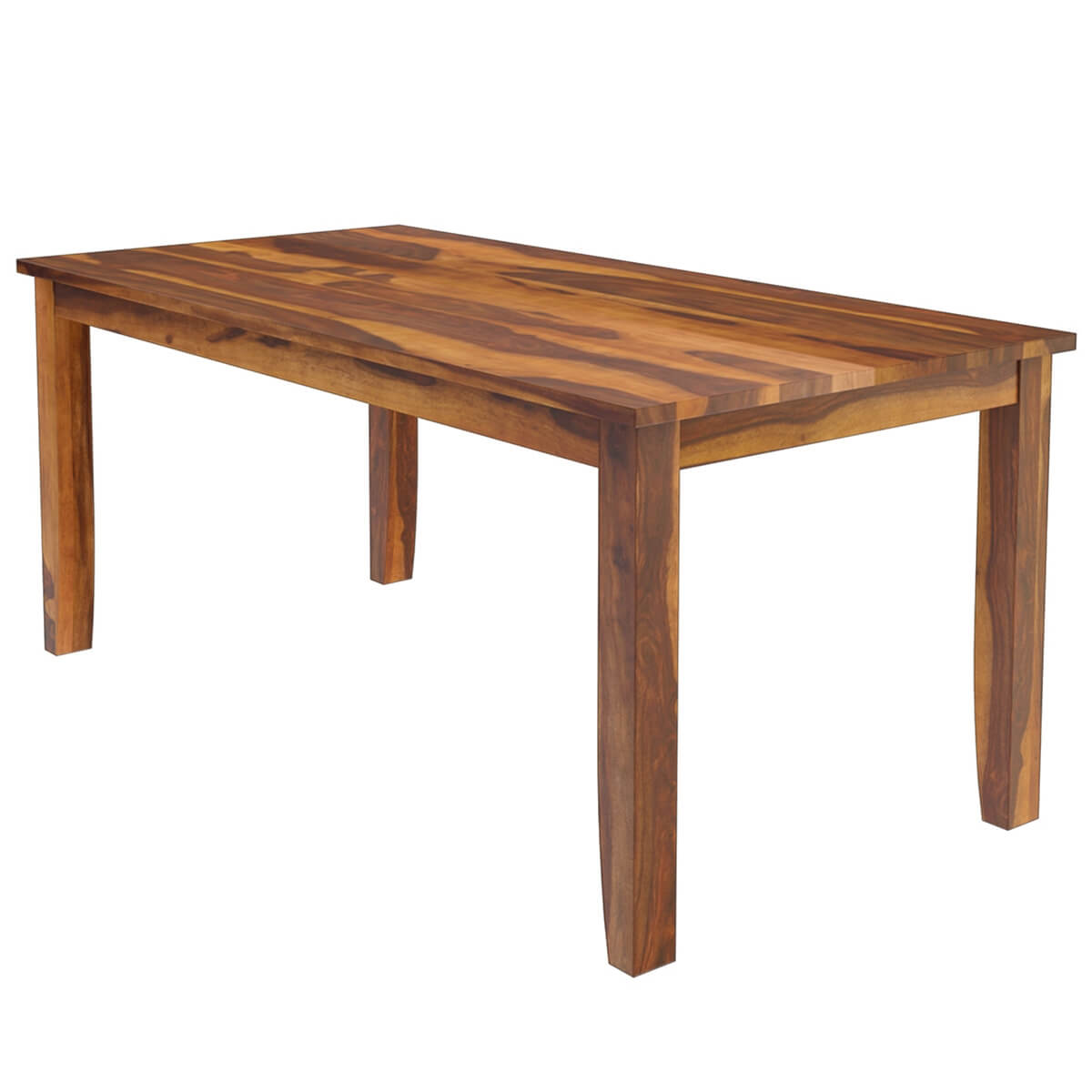Tough and Stylish Options for Sturdy Dining Table Legs Wood Solutions
Tough and Stylish Options for Sturdy Dining Table Legs Wood Solutions
Blog Article
Checking Out the Different Sorts Of Table Legs Wood for Your Eating Area
The choice of table legs timber can greatly affect both the useful and aesthetic qualities of your dining room. Solid timber alternatives, such as oak and walnut, give a traditional look with unparalleled toughness, while engineered timber alternatives use innovative layouts that imitate the splendor of natural grains. In addition, the growing pattern of reclaimed timber presents a sustainable component that interest ecologically aware consumers. As we check out these numerous options, it comes to be vital to take into consideration not only the visual allure but likewise the sensible implications of each material selection. What factors should direct your choice?
Strong Timber Options

Furthermore, strong timber is renowned for its strength and longevity. Unlike engineered products, strong timber is much less vulnerable to warping and damage in time when appropriately kept. This makes it an optimal selection for family members or those who frequently hold events. Each item of strong wood is one-of-a-kind, showcasing individual characteristics that include in the charm and character of the dining table.
Furthermore, solid wood can be finished in various ways, varying from natural oils to stained finishes, allowing homeowners to personalize their furnishings to match their style. In recap, choosing solid wood for eating table legs not only guarantees structural honesty yet additionally improves the visual appeal of the eating location, making it a beneficial investment for any kind of home.
Engineered Timber Alternatives

Plywood, constructed from multiple layers of timber veneer, is steady and especially solid, making it a superb option for dining table legs. Its split structure allows it to hold up against modifications in humidity and temperature level much better than traditional strong wood. MDF, on the various other hand, provides a smooth surface area for painting or veneering, making it possible for designers to achieve a sleek look while keeping structural honesty.
Particleboard, commonly used in economical choices, gives good strength and is lightweight, making it less complicated to deal with. Nonetheless, it may not be as long lasting as plywood or MDF. It is necessary to consider the designated usage and wanted aesthetic when picking engineered timber alternatives. These products not just boost the performance of eating rooms but also permit for greater design versatility, making certain that typical and contemporary styles can exist together sympathetically.
Reclaimed Timber Includes
Recovered timber provides an unique blend of sustainability and personality, making it an increasingly popular choice for eating table legs. Sourced from old barns, manufacturing facilities, and various other frameworks, redeemed timber personifies a background that new materials simply can not replicate. Each piece lugs its very own tale, click now marked by unique imperfections, knots, and varying grain patterns, which add to a table's one-of-a-kind visual charm.
Along with its visual appeal, reclaimed timber is an eco pleasant choice. By repurposing previously used products, it lowers the need for new lumber, thus aiding to save forests and minimize waste. This straightens with an expanding customer preference for sustainable methods in furniture.
Additionally, reclaimed timber is commonly much more durable than freshly gathered wood as a result of its age. The natural drying out procedure that recovered wood undertakes results in a denser and more powerful material, making it much less vulnerable to bending and splitting. This improves the long life of dining tables, allowing them to stand up to the rigors of day-to-day use.
Softwood vs. Wood
When selecting table legs, understanding the distinctions in between softwood and hardwood is critical for accomplishing both visual and practical objectives. Softwoods, originated from coniferous trees, such as yearn and cedar, are identified by their lighter weight and ease of control. They generally display an even more rustic appearance, making them Continued appropriate for informal or country-style eating rooms. However, softwoods are normally much less long lasting than hardwoods, which can be a factor to consider for households or those looking for longevity in their furnishings.
On the various other hand, woods, sourced from deciduous trees like cherry, maple, and oak, are renowned for their density, strength, and sturdiness. The complex grain patterns and abundant colors of woods supply a classic and advanced charm, making them suitable for official dining settings. While hardwoods tend to be more expensive and heavier, their strength versus damage frequently warrants the investment.
Eventually, the choice between softwood and wood for eating table legs ought to align with your design vision, use demands, and budget, making sure that your eating space reflects your individual style while remaining functional with time.

Therapies and coatings
The visual charm and durability of eating table legs can be dramatically boosted via numerous coatings and therapies. These processes not only protect the wood from damages yet additionally boost its look, enabling it to match diverse indoor designs.
One typical treatment is staining, which penetrates the timber and boosts its all-natural grain while adding color. Discolorations give a rich, classy look, allowing property owners to match their furniture with existing decoration. Conversely, clear surfaces such as polyurethane or varnish produce a protective layer without modifying the wood's initial color, making certain sturdiness versus deterioration.
Furthermore, natural oils, like tung or linseed oil, nurture the timber and supply a subtle shine, all while being environmentally friendly. These oils enable the surface to take a breath, protecting against moisture buildup and prospective bending.
For those looking for a rustic beauty, troubled or weathered finishes can be applied to develop an aged look, adding character to the piece. Inevitably, the selection of treatments and surfaces depends upon personal choice, wanted appearances, and the particular wood kind, making it important to think about these aspects when selecting table legs for your room.
Verdict
Solid timbers, crafted choices, and redeemed choices each deal distinctive benefits, providing to investigate this site different preferences and requirements. Ultimately, the option of timber type ought to line up with wanted design, resilience, and ecological factors to consider, improving the general eating experience.
The choice of eating table legs timber can greatly influence both the visual and functional top qualities of your eating room - Dining Table Legs Wood. Solid wood choices, such as oak and walnut, supply a timeless appearance with unrivaled durability, while crafted timber alternatives provide innovative designs that resemble the splendor of natural grains. Solid wood uses a classic quality that can raise the total style of a dining area. Each item of solid wood is one-of-a-kind, showcasing specific characteristics that add to the charm and personality of the dining table
Additionally, recovered timber is commonly a lot more durable than recently gathered timber due to its age.
Report this page